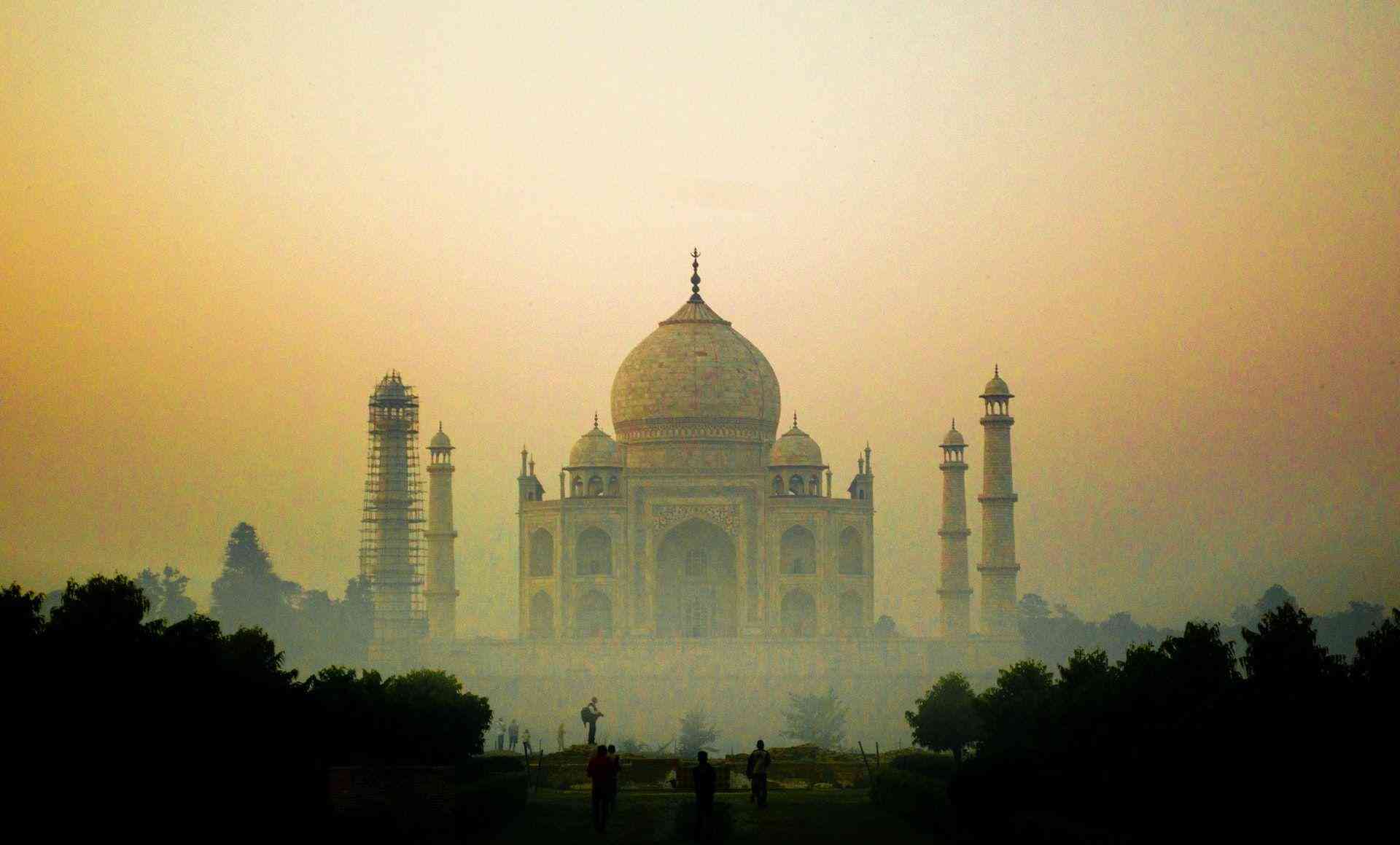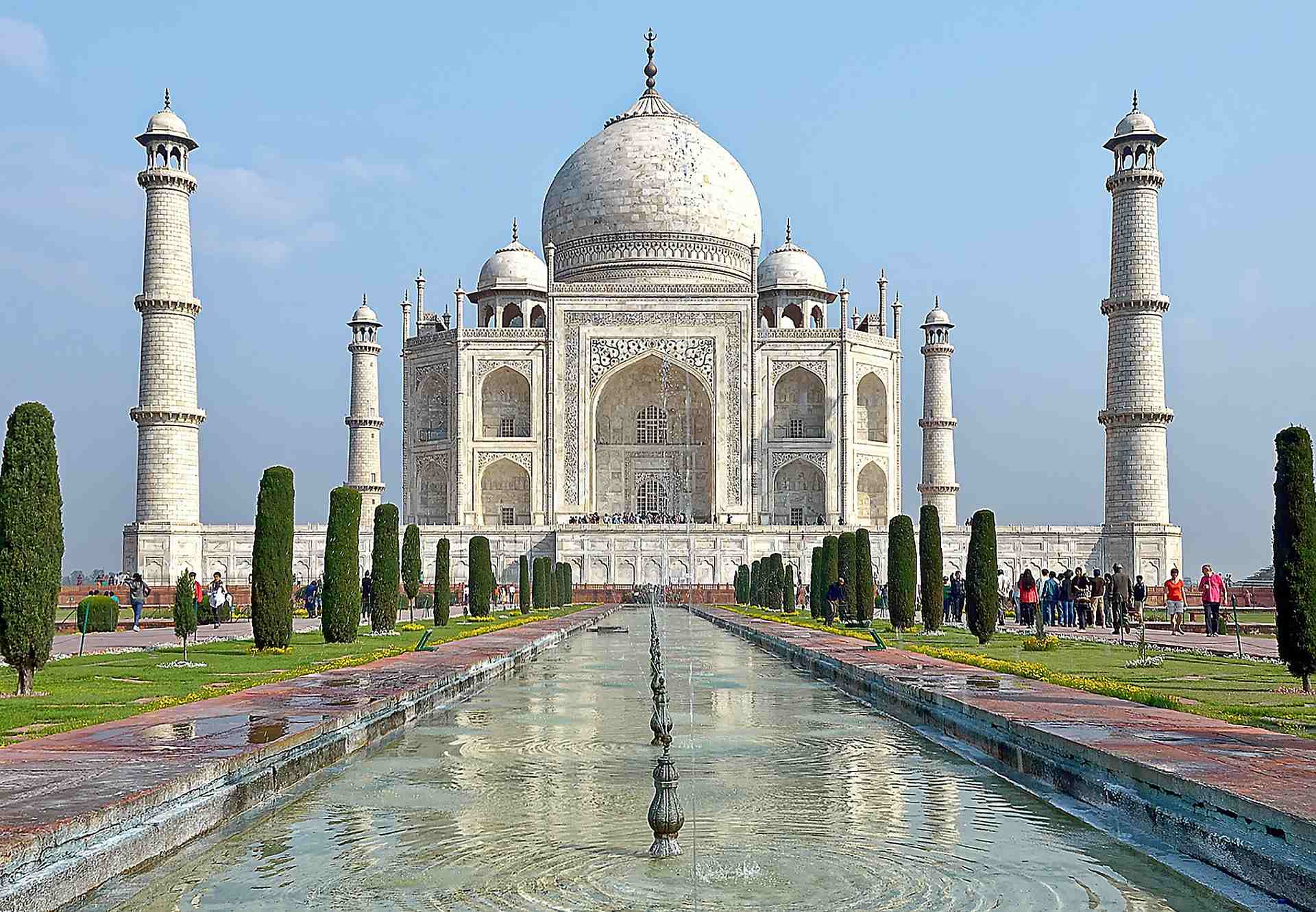The Taj Mahal stands with its glory by the south bank of the Yamuna river in Agra, western Uttar Pradesh State, Northern India. It is a mausoleum made up of white marble, which was built in memory of the third wife of the then Mughal emperor Shah Jahan.
“Taj” means “crown,” and the word “Mahal” means “palace.” Taj Mahal means “Crown of Palaces.” The story behind this immense architectural marvel is tragic. Mumtaz Mahal, originally named Arjumand Bano Begum, was Shah Jahan's third wife, who died in the year 1631 while giving birth to their 14th child. This incident struck the Mughal emperor out of the blue.
One year later, the construction of the Taj Mahal began by the orders of the emperor Shah Jahan. Ustad Ahmad Lahouri was an architect in Shah Jahan's court, who is accredited as the architect of this engineering marvel. The Taj Mahal stands 73 meters high with a base length of 296 meters and a width of 112 meters. The main structure has four small domes surrounding a large white dome in the center. The Taj Mahal Complex includes a garden, a mosque and the mausoleum itself.

It took almost 20 years for 20,000 workers to complete the construction of the mausoleum. The construction took place between the years of 1632-1753. 1000 elephants were used to transport the building materials for this massive structure. The building materials and gemstones were brought from various places from all over the world which includes white marble, red sandstone, sapphire, carnelian and many other precious/semi-precious gemstones. In total, 28 types of stones were inlaid into the white marble.
The Taj Mahal has been designated as one of the “7 wonders of the world” by UNESCO. Nearly 3 million people visit the Taj Mahal every year.
Indeed, the Taj Mahal is a stunning showpiece of Muslim art and architecture, which has eluded lovers all over the world for centuries.
Sources:
- Taj Mahal. Retrieved from https://www.history.com/topics/india/taj-mahal on 04/21/2020
- Taj Mahal. Retrieved from https://www.britannica.com/topic/Taj-Mahal on 04/21/2020
- This Colossal Tomb Is an Enduring Monument to Love. Retrieved from https://www.nationalgeographic.com/travel/world-heritage/taj-mahal/ on 04/21/2020
- Taj Mahal. Retrieved from https://whc.unesco.org/en/list/252/ on 04/21/2020


